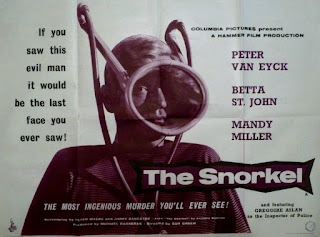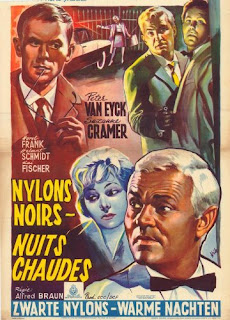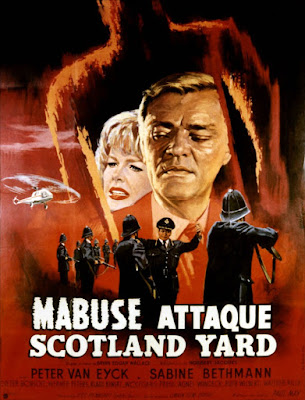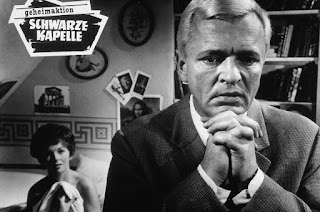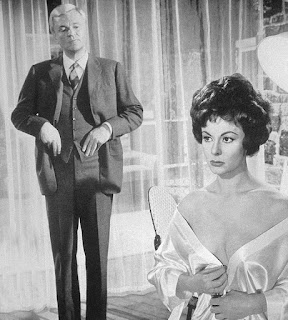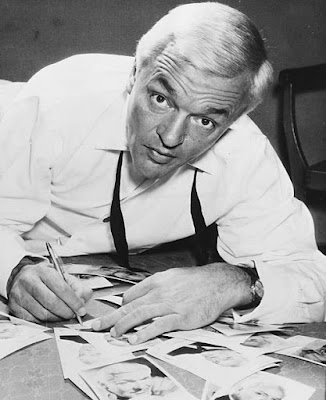A big CONGRATULATIONS to all my friends and colleagues whose good works have been nominated for the next round of Rondo Awards! Though she’s not named as such on the ballot, I was particularly pleased to see Donna Lucas’ cover for the Farewell Issue of VIDEO WATCHDOG on the ballot - her only solo cover creation since the Rondos began! (Of course, she’s up against THREE Mark Maddox covers, two of them wraparounds!) Also very pleased to see that producing VW’s final issue allowed for the nominations of Larry Blamire (Best Columnist) and John-Paul Checkett (Best Article) and, of course, our final shot at Best Magazine!
I wasn’t anticipating much in the way of nominations for myself this year, other than maybe one for Best Commentary, and I was very happy to be acknowledged for my work on Arrow’s CALTIKI THE IMMORTAL MONSTER - but I was also very pleased and surprised to be reminded of other work I’d done (Best Article for my CALTIKI piece for SCREEM and Best Columnist for my “Shot in the Dark” piece for DIABOLIQUE)! I’m also thrilled for Neil Snowdon’s Best Book nomination for his WE ARE THE MARTIANS: THE LEGACY OF NIGEL KNEALE, to which I contributed - and finally, a nomination for the work I do here at Video WatchBlog, now in its 12th big year - and rapidly approaching its 2,000,000th page view!
It's both wonderful and heartening to see how many projects of real passion and value are represented on the ballot this year. Competition will be stiff!
Please celebrate the very best work being done in horror and fantasy journalism and criticism by perusing the ballot, finding your favorites, and casting your votes! And a Big Thanks to Mr. David Colton and his wife Eileen Colton for all the work that goes into organizing and hosting this occasion each year - from all concerned!
You can find a ballot listing all this year's nominees at the Rondo Awards website.
A postscript which I feel compelled to add, given some Facebook reaction to the ballot about how few female creators and contributors made the the final selection. I agree it's an unfortunate oversight but, I hasten to add, not a biased or malicious one; it's just an indication of some of the important work going on that missed the radar of the Classic Horror Film Board's nominations forum. I was very pleased to see Laura Wagner's work finally acknowledged in the Best Columnist category, as well as the Soska Sisters' Blood Drive PSA's for Women In Horror Month, but there are some blind spots. Samm Deighan and Kat Ellinger did a slew of superb audio commentaries this past year - admittedly some for the UK market only, and they also figure notably in the podcast realm with Daughters of Darkness and Kat's Hell's Belles podcast with Heather Drain. (Speaking of podcasts, I miss seeing Bill Ackerman's SUPPORTING CHARACTERS and Mick Garris' POST MORTEM on the ballot, too!) Heather Buckley's production work on the DVD supplements for RAWHEAD REX were also worthy; she's such a force of nature and so prolific and passionate about horror, her name should be all over this ballot.
If you agree, one thing you can certainly do to advance awareness is to take into consideration the fine work being done in the service of the genre by all these ladies as you cast your votes in the Write-In categories - as well as Kimberly Lindbergs, Kier-la Janisse, Anne Billson, Emma Westwood, Alexandra West, Maura McHugh, Thana Niveau, Alexandra Heller-Nicholas, Marcelline Block, Stacie Ponder, and many more. (My apologies to anyone I have inevitably left out in my haste to add these words.) These women are bringing so much of importance to the table and their works will thoroughly reward your attention!
(c) 2018 by Tim Lucas. All rights reserved.
I wasn’t anticipating much in the way of nominations for myself this year, other than maybe one for Best Commentary, and I was very happy to be acknowledged for my work on Arrow’s CALTIKI THE IMMORTAL MONSTER - but I was also very pleased and surprised to be reminded of other work I’d done (Best Article for my CALTIKI piece for SCREEM and Best Columnist for my “Shot in the Dark” piece for DIABOLIQUE)! I’m also thrilled for Neil Snowdon’s Best Book nomination for his WE ARE THE MARTIANS: THE LEGACY OF NIGEL KNEALE, to which I contributed - and finally, a nomination for the work I do here at Video WatchBlog, now in its 12th big year - and rapidly approaching its 2,000,000th page view!
It's both wonderful and heartening to see how many projects of real passion and value are represented on the ballot this year. Competition will be stiff!
Please celebrate the very best work being done in horror and fantasy journalism and criticism by perusing the ballot, finding your favorites, and casting your votes! And a Big Thanks to Mr. David Colton and his wife Eileen Colton for all the work that goes into organizing and hosting this occasion each year - from all concerned!
You can find a ballot listing all this year's nominees at the Rondo Awards website.
A postscript which I feel compelled to add, given some Facebook reaction to the ballot about how few female creators and contributors made the the final selection. I agree it's an unfortunate oversight but, I hasten to add, not a biased or malicious one; it's just an indication of some of the important work going on that missed the radar of the Classic Horror Film Board's nominations forum. I was very pleased to see Laura Wagner's work finally acknowledged in the Best Columnist category, as well as the Soska Sisters' Blood Drive PSA's for Women In Horror Month, but there are some blind spots. Samm Deighan and Kat Ellinger did a slew of superb audio commentaries this past year - admittedly some for the UK market only, and they also figure notably in the podcast realm with Daughters of Darkness and Kat's Hell's Belles podcast with Heather Drain. (Speaking of podcasts, I miss seeing Bill Ackerman's SUPPORTING CHARACTERS and Mick Garris' POST MORTEM on the ballot, too!) Heather Buckley's production work on the DVD supplements for RAWHEAD REX were also worthy; she's such a force of nature and so prolific and passionate about horror, her name should be all over this ballot.
If you agree, one thing you can certainly do to advance awareness is to take into consideration the fine work being done in the service of the genre by all these ladies as you cast your votes in the Write-In categories - as well as Kimberly Lindbergs, Kier-la Janisse, Anne Billson, Emma Westwood, Alexandra West, Maura McHugh, Thana Niveau, Alexandra Heller-Nicholas, Marcelline Block, Stacie Ponder, and many more. (My apologies to anyone I have inevitably left out in my haste to add these words.) These women are bringing so much of importance to the table and their works will thoroughly reward your attention!
(c) 2018 by Tim Lucas. All rights reserved.












